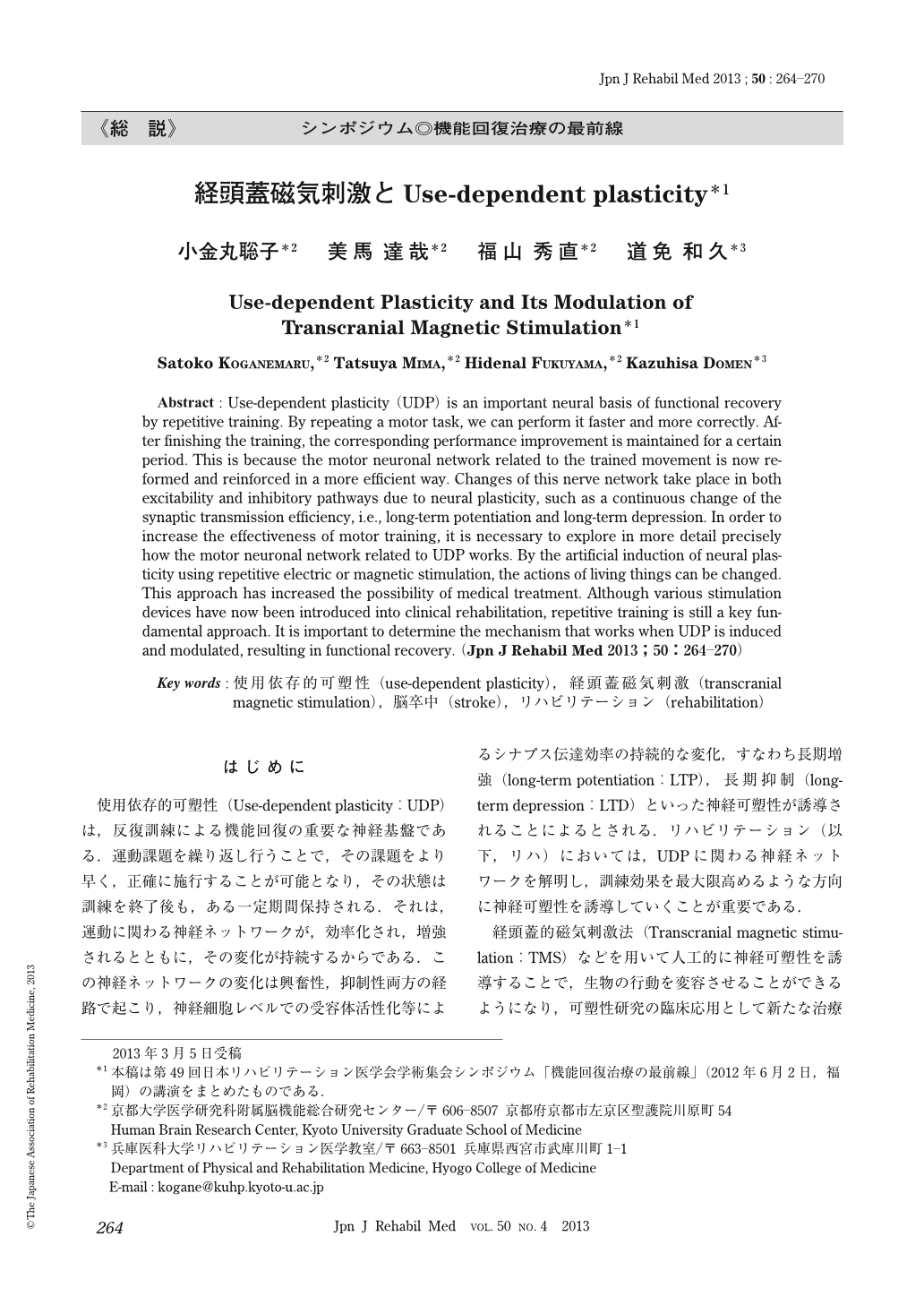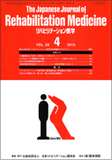Japanese
English
- 販売していません
- Abstract 文献概要
- 1ページ目 Look Inside
- 参考文献 Reference
はじめに
使用依存的可塑性(Use-dependent plasticity:UDP)は,反復訓練による機能回復の重要な神経基盤である.運動課題を繰り返し行うことで,その課題をより早く,正確に施行することが可能となり,その状態は訓練を終了後も,ある一定期間保持される.それは,運動に関わる神経ネットワークが,効率化され,増強されるとともに,その変化が持続するからである.この神経ネットワークの変化は興奮性,抑制性両方の経路で起こり,神経細胞レベルでの受容体活性化等によるシナプス伝達効率の持続的な変化,すなわち長期増強(long-term potentiation:LTP),長期抑制(long-term depression:LTD)といった神経可塑性が誘導されることによるとされる.リハビリテーション(以下,リハ)においては,UDPに関わる神経ネットワークを解明し,訓練効果を最大限高めるような方向に神経可塑性を誘導していくことが重要である.
経頭蓋的磁気刺激法(Transcranial magnetic stimulation:TMS)などを用いて人工的に神経可塑性を誘導することで,生物の行動を変容させることができるようになり,可塑性研究の臨床応用として新たな治療の可能性が広がっている.今,リハ臨床現場にも様々な刺激装置が導入され,より効果的なリハアプローチが可能となってきた.その一方で反復訓練がリハの基本であることに依然として変わりはない.いかにUDPを誘導して機能を回復させるかは今後も重要なテーマである.
Abstract : Use-dependent plasticity (UDP) is an important neural basis of functional recovery by repetitive training. By repeating a motor task, we can perform it faster and more correctly. After finishing the training, the corresponding performance improvement is maintained for a certain period. This is because the motor neuronal network related to the trained movement is now reformed and reinforced in a more efficient way. Changes of this nerve network take place in both excitability and inhibitory pathways due to neural plasticity, such as a continuous change of the synaptic transmission efficiency, i.e., long-term potentiation and long-term depression. In order to increase the effectiveness of motor training, it is necessary to explore in more detail precisely how the motor neuronal network related to UDP works. By the artificial induction of neural plasticity using repetitive electric or magnetic stimulation, the actions of living things can be changed. This approach has increased the possibility of medical treatment. Although various stimulation devices have now been introduced into clinical rehabilitation, repetitive training is still a key fundamental approach. It is important to determine the mechanism that works when UDP is induced and modulated, resulting in functional recovery.

Copyright © 2013, The Japanese Association of Rehabilitation Medicine. All rights reserved.


